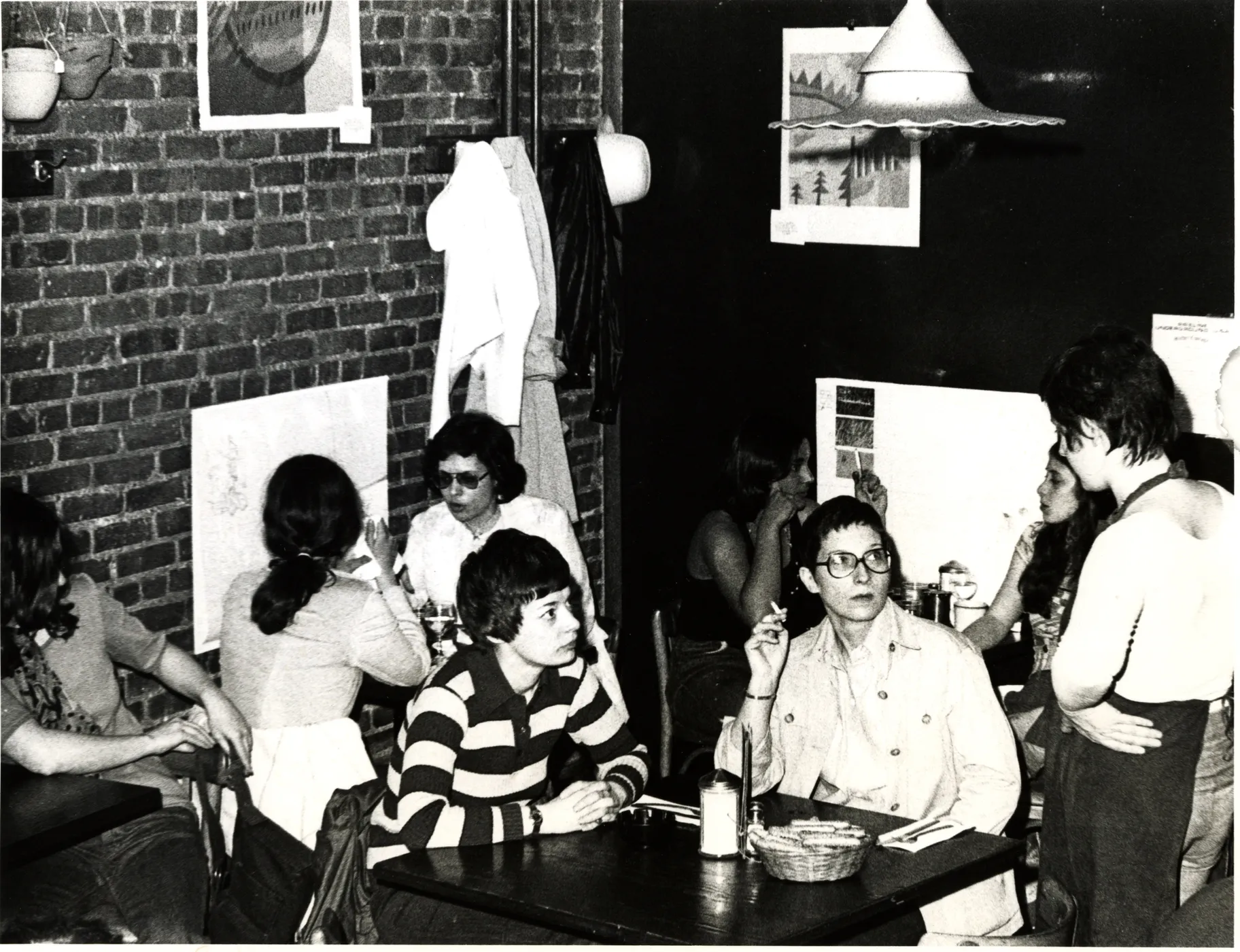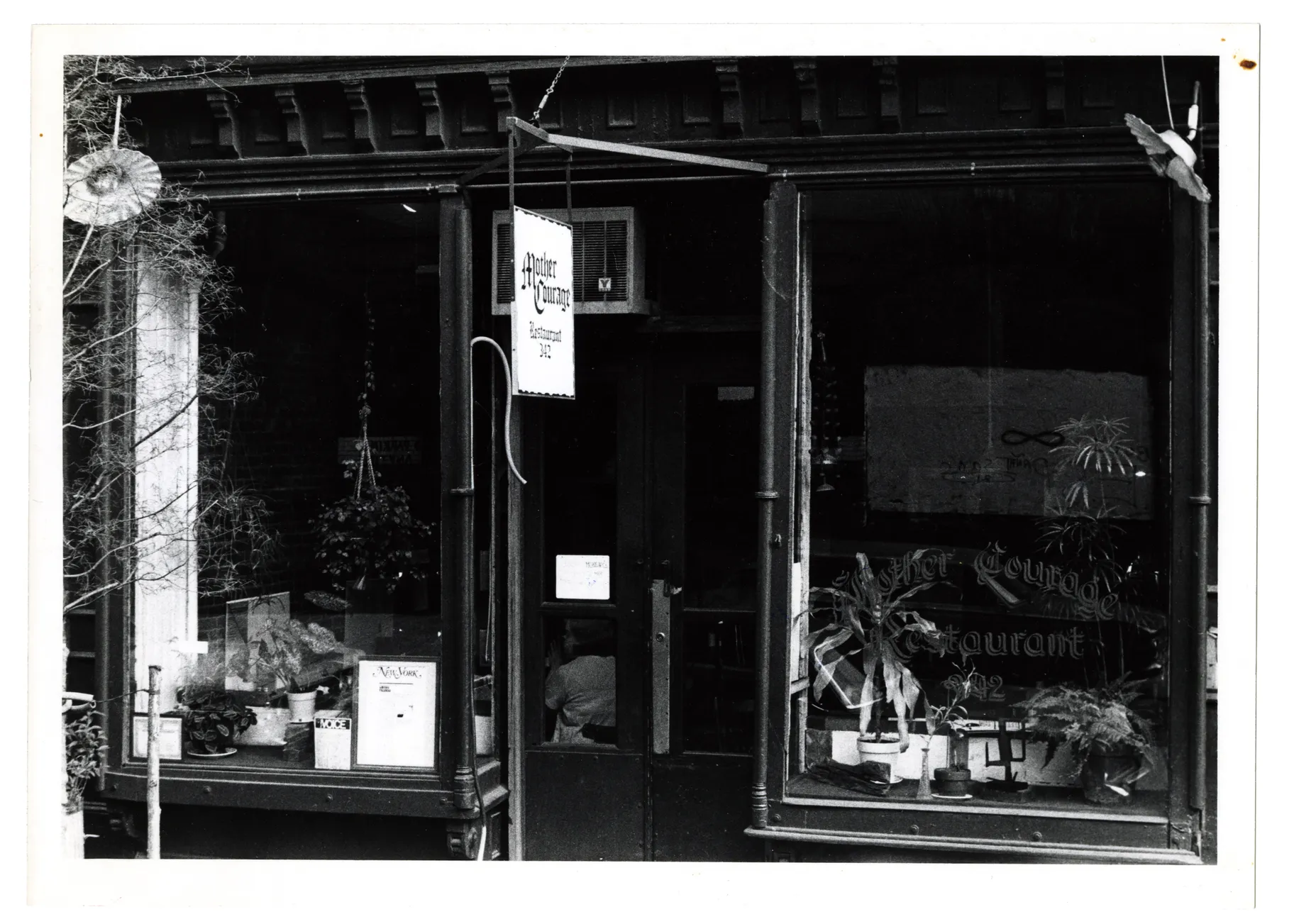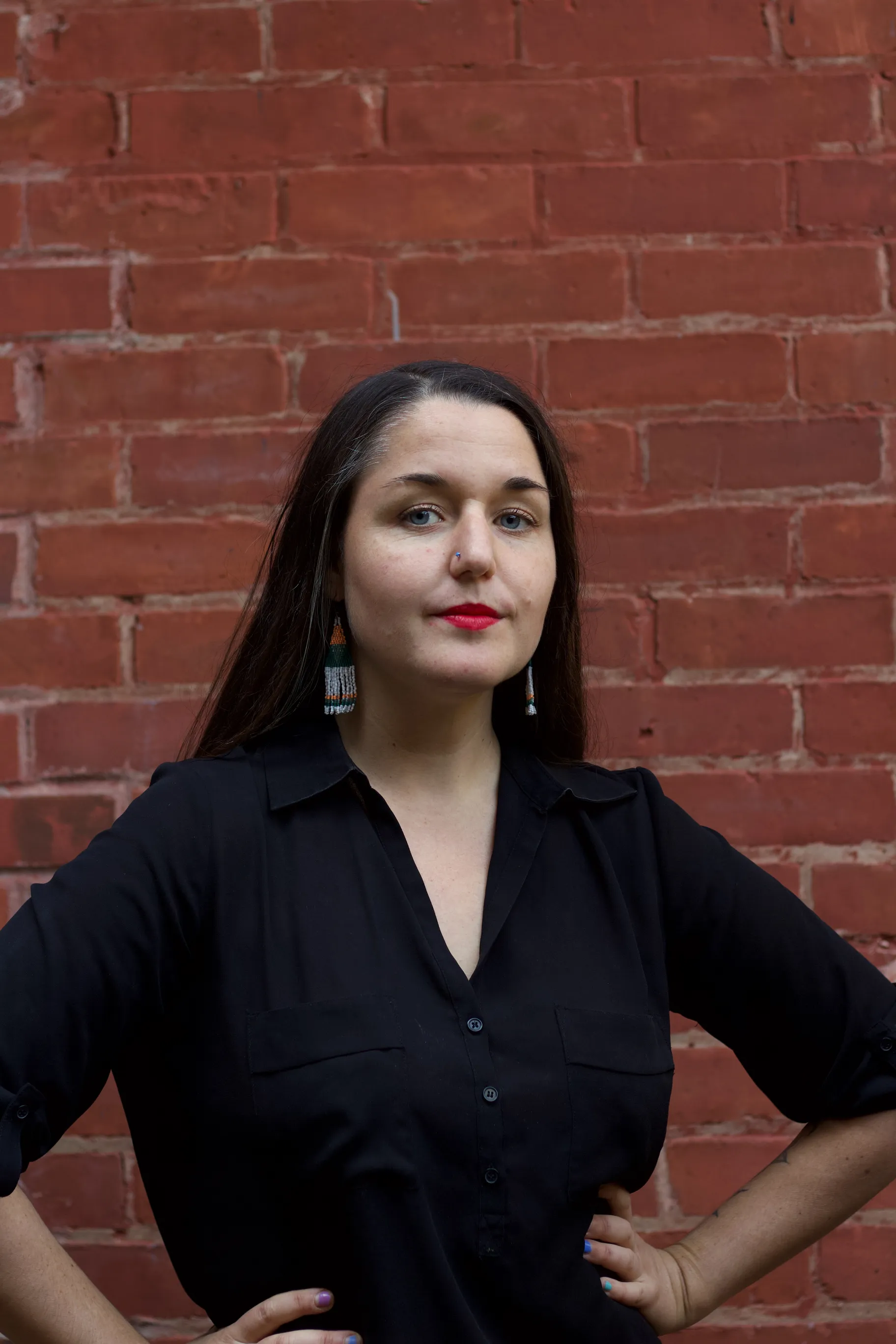What exactly is a feminist restaurant? They're establishments that embody feminist values in their menu, labor practices, aesthetics, and events, says Dr. Alex Ketchum, who teaches gender, sexuality, and feminist studies at McGill University in Quebec.

Patrons dine at Mother Courage, which was owned and operated by Dolores Alexander and Jill Ward from 1972 to 1977. Photo from the Dolores Alexander Papers, Smith College Special Collections.
Lesbians opened some of the earliest feminist restaurants in the United States. They relied on what would now be known as crowdfunding — hosting dances, county fairs, and donations to bankroll these enterprises.

Located in a former luncheonette in Greenwich Village, Mother Courage was the first feminist restaurant in the United States. Photo from the Dolores Alexander Papers, Smith College Special Collections.
The founders of Mother Courage, which opened in 1972 in New York City, wanted to create a space for activists and the feminist movement. Bloodroot Feminist Vegetarian Restaurant, opened in 1977, also functioned as a bookstore and still operates in Bridgeport, Connecticut. Founder Selma Miriam is in her 80s and, with partner Noel Furie, is still involved with the business.

"Ingredients for Revolution: A History of American Feminist Restaurants, Cafes, and Coffeehouses" explores feminism in hospitality from the 1970s to the present. Photo courtesy of Concordia University Press.
In her book, Ingredients for Revolution: A History of American Feminist Restaurants, Cafes, and Coffeehouses, Ketchum explores the history of the more than 230 feminist establishments that existed in the United States from 1972 until today.

Can a restaurant be a feminist space? Dr. Alex Ketchum explores this question in her book, "Ingredients for Revolution." Photo by Pierre Faniel.
